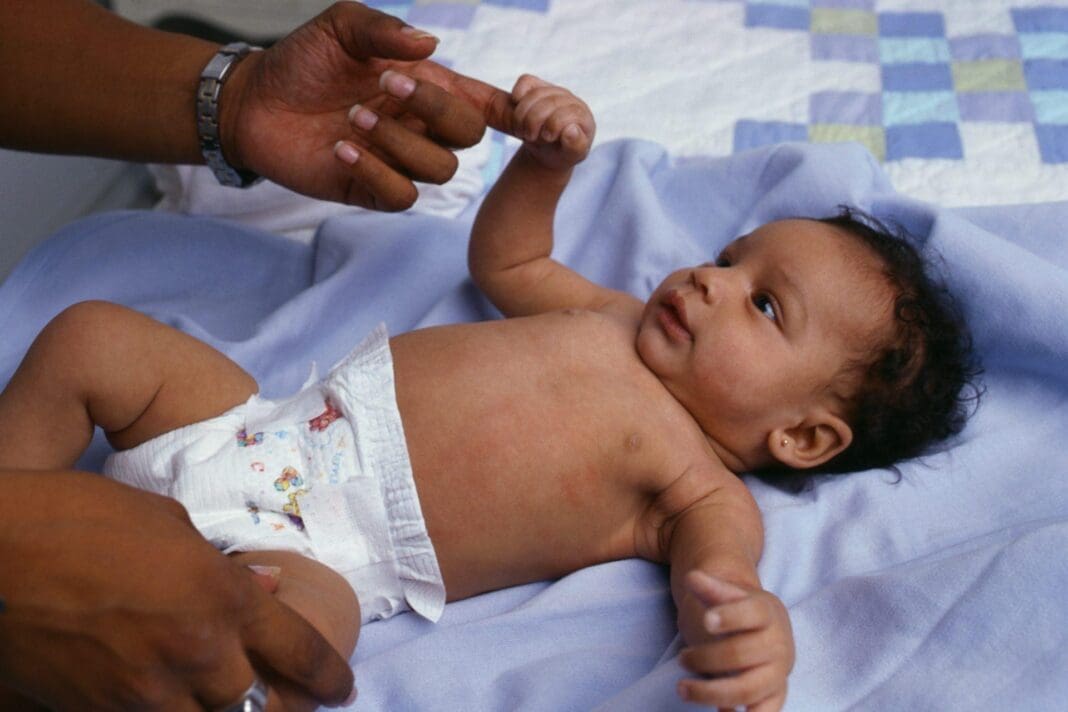Whooping cough, a bacterial infection that can be especially dangerous for babies and young children, is on the rise. Already in 2025 the U.S. has recorded 8,485 cases. That’s compared with 4,266 cases during the same period in 2024.
Like measles, which is also spreading at unprecedented levels, whooping cough, more formally known as pertussis, can be prevented by a safe and effective vaccine. But with anti-vaccine sentiment increasing and cuts to immunization services, vaccination rates for whooping cough over the past two years have declined in children.
The Conversation asked epidemiologist Annette Regan to explain why pertussis has become so prevalent and how families can protect themselves from the disease.
Pertussis is a vaccine-preventable disease caused by the bacterium Bordetella pertussis. Researchers in France first identified the B. pertussis bacterium in 1906. The first recorded epidemic of pertussis is thought to have occurred in Paris in 1578.
Infection can cause an acute respiratory illness characterized by severe and spasmodic coughing spells. The classic symptom of pertussis is a “whoop” sound caused by someone trying to breath during a bad cough. Severe complications of pertussis include slowed or stopped breathing, pneumonia and seizures. The disease is most severe in young babies, although severe cases and deaths can also occur in older children and adults.
Some doctors call pertussis “the 100-day cough” because symptoms can linger for weeks or even months.
The World Health Organization estimates that 24.1 million pertussis cases and 160,700 deaths occur worldwide in children under 5 each year. Pertussis is highly contagious. Upon exposure, 80% of people who have not been previously exposed to the bacterium or vaccinated against the disease will develop an infection.
Fortunately, the disease is largely preventable with a safe and effective vaccine, which was first licensed in the U.S. in 1914.
During the COVID-19 pandemic between 2020 and 2022, pertussis cases were lower than usual. This may have been a result of limited social contact due to social distancing, masking, school closures and lockdown measures, which reduced the spread of disease overall.
In the past two years, however, pertussis cases have surpassed figures from before the pandemic. In 2024, local and state public health agencies reported 35,435 pertussis cases to the Centers for Disease Control and Prevention – a rate five times higher than the 7,063 cases reported in 2023 and nearly double the 18,617 cases reported in 2019 prior to the pandemic.
Between October 2024 and April 2025, at least four people in the U.S. have died of pertussis: two infants, one school-age child and one adult.
Although vaccines have resulted in a dramatic decline in pertussis infections in the U.S., incidence of the disease has been rising since the 1990s, except for a brief dip during the COVID-19 pandemic.
Before the start of routine childhood vaccination for pertussis in 1947, its rates hovered between 100,000 and 200,000 cases per year. With vaccines, rates plunged under 50,000 annually by the late 1950s and under 10,000 per year in the late 1960s. They reached a low of 1,010 cases in 1976.
Starting in the 1980s and 1990s, however, the U.S. and several other countries have been seeing a steady resurgence of pertussis cases, which have exceeded 10,000 cases in the U.S. every year from 2003 to 2019. They dropped again during the pandemic until last year’s resurgence.
There is no single explanation for why cases have been rising recently, but several factors probably contribute. First, pertussis naturally occurs in cyclic epidemics, peaking every two to five years. It is possible that the U.S. is headed into one of these peaks after a period of low activity between 2020 and 2022. However, some scientists have noted that the increase in cases is larger than what would be expected during a usual peak.
Some scientists have noted that this apparent resurgence correlates with a change in the type of vaccine used in children. Until the 1990s, the pertussis vaccine contained whole, killed B. pertussis bacteria cells. Whole-cell vaccine can stimulate a long-lasting immune response, but it is also more likely to cause fever and other vaccine reactions in children.
In the 1990s, national vaccine programs began to transition to a vaccine that contains purified components of the bacterial cell but not the whole cell. Some scientists now believe that although this partial-cell vaccine is less likely to cause high fevers in children, it provides protection for a shorter time. Immunity after whole-cell vaccination is thought to last 10-12 years compared with three to five years after the partial-cell vaccine. This means people may become susceptible to infection more quickly after vaccination.
Vaccination rates are also not as high as they should be and have started falling in children since 2020. In the U.S., the percent of kindergartners who are up to date with recommended pertussis vaccines has declined from 95% during the 2019-20 school year to 92% in the 2023-24 school year. Even fewer adolescents receive a booster dose.
Routine vaccination for children starting in infancy followed by booster doses in adolescents and adults can help keep immunity high.
Public health experts recommend that children receive five doses of the pertussis vaccine. According to the recommendations, they should receive the first three doses at 2, 4 and 6 months of age, then two additional doses at 15 months and 4 years of age, with the aim of providing protection through early adolescence.
Infants younger than 6 weeks are not old enough to get a pertussis vaccine but are at the greatest risk of severe illness from pertussis. Vaccination during pregnancy can offer protection from birth due to antibodies that pass from the mother to the developing fetus. Many countries, including the U.S., now recommend that women receive one dose of pertussis vaccine between the 27th and 36th week of every pregnancy to protect their babies.
To maintain protection against pertussis after childhood, a booster dose of pertussis vaccine is recommended for adolescents at 11 to 12 years of age. The CDC recommends that all adults receive at least one booster dose.
Because immunity declines over time, people who are in contact with infants and other high-risk groups, such as caregivers, parents and grandparents, may benefit from additional booster doses. When feasible, the CDC also recommends a booster dose for adults 65 years and older.
Vaccine safety studies over the past 80 years have proven the pertussis vaccine to be safe. Around 20% to 40% of vaccinated infants experience local reactions, such as pain, redness and swelling at the vaccination site, and 3% to 5% of vaccinated infants experience a low-grade fever. More severe reactions are much less common and occur in fewer than 1% of vaccinated infants.
The vaccine is also highly effective: For the first year after receiving all five doses of the pertussis vaccine, 98% of children are protected from pertussis. Five years after the fifth dose, 65% of vaccinated children remain protected.
Booster vaccination during adolescence protects 74% of teens against pertussis, and booster vaccination during pregnancy protects 91% to 94% of immunized babies against hospitalization due to pertussis.
Families can talk to their regular health care providers about whether a pertussis vaccine is needed for their child, themselves or other family members.
This article is republished from The Conversation, a nonprofit, independent news organization bringing you facts and trustworthy analysis to help you make sense of our complex world. It was written by: Annette Regan, University of California, Los Angeles
Read more: Measles cases are on the rise − here’s how to make sure you’re protected FDA’s greenlighting of maternal RSV vaccine represents a major step forward in protecting young babies against the virus A nagging cough can hang on for weeks or months following a respiratory illness – and there is precious little you can do about it
Annette Regan receives funding from the National Institutes of Health, the US Centers for Disease Control and Prevention, and the Global Vaccine Data Network. 














